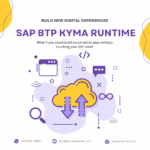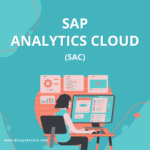As businesses evolve in the digital era, the need for efficient integration solutions has never been more critical. Transitioning from SAP Process Integration (PI) or Process Orchestration (PO) to SAP Cloud Platform Integration (CPI) offers organizations the chance to enhance their integration capabilities and optimize their operations. In this blog post, we’ll explore the benefits, challenges, and best practices for migrating to SAP CPI.
What is SAP CPI?
SAP Cloud Platform Integration (CPI) is a cloud-based integration service that facilitates the connection of on-premise and cloud applications. It provides tools and pre-built content for integrating various systems, ensuring smooth data flow and improved operational efficiency. Unlike PI/PO, which relies on on-premise infrastructure, CPI allows for greater flexibility and scalability.
Why Migrate from SAP PI/PO to SAP CPI?
Enhanced Agility and Flexibility
SAP CPI provides organizations with the ability to adapt quickly to changing business needs. Its cloud-based nature allows for rapid deployment of integrations without the need for extensive on-premise infrastructure.
Cost Efficiency
Migrating to SAP CPI can lead to significant cost savings. By eliminating the need for hardware maintenance and reducing operational costs, organizations can allocate resources more effectively.
Access to Advanced Features
SAP CPI comes with modern features like pre-built connectors, integration templates, and a user-friendly interface, making it easier for organizations to create and manage integrations.
Improved Performance and Scalability
As your business grows, so do your integration needs. SAP CPI is designed to scale effortlessly, handling increased data volumes and user demands without compromising performance.
Seamless Integration with SAP BTP
Migrating to SAP CPI allows organizations to take full advantage of the SAP Business Technology Platform (BTP). This integration enhances data management, analytics, and application development capabilities.
Challenges of Migration
While migrating from SAP PI/PO to SAP CPI offers numerous benefits, it’s essential to be aware of potential challenges:
Complexity of Existing Integrations
Existing integrations may involve complex logic and dependencies that need to be carefully analyzed and replicated in the new environment.
Change Management
Transitioning to a new platform requires change management strategies to ensure that teams are trained and equipped to work with the new system.
Data Migration
Ensuring that data is migrated accurately and securely can be a daunting task. Organizations must plan carefully to avoid data loss or corruption.
Best Practices for Successful Migration
Assessment and Planning
Begin by assessing your existing PI/PO landscape. Identify critical integrations and prioritize them for migration. Develop a comprehensive migration plan outlining timelines, resources, and responsibilities.
Leverage Pre-Built Content
SAP CPI provides pre-built integration content and templates that can accelerate the migration process. Use these resources to simplify your integration efforts.
Test Thoroughly
Before going live with your new integrations, conduct extensive testing to ensure that everything functions as expected. This step is crucial to identify and resolve any issues before they impact your business operations.
Provide Training and Support
Equip your team with the necessary training and resources to navigate SAP CPI effectively. Ongoing support during and after the migration will help ease the transition and boost user adoption.
Monitor and Optimize
After migration, continuously monitor the performance of your integrations. Use analytics tools to identify bottlenecks and areas for improvement, ensuring your integrations remain efficient and effective.
Conclusion
Migrating from SAP PI/PO to SAP CPI presents an opportunity for organizations to modernize their integration processes and enhance operational efficiency. With its cloud-based architecture and advanced features, SAP CPI enables businesses to stay agile in an ever-evolving digital landscape.











